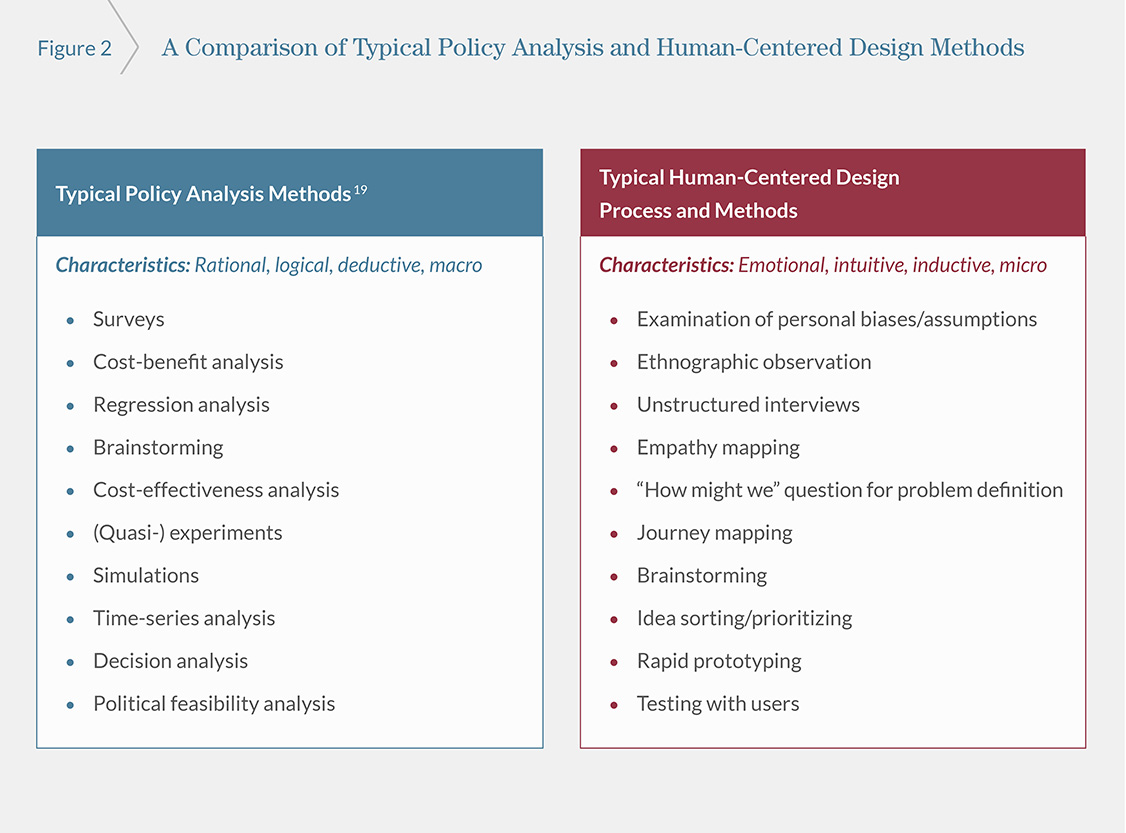In a lot of ways, the worlds of education policy and human-centered design couldn’t be more dissimilar. The former relies heavily on large-scale quantitative analysis and involves a long, complex public process. The latter is deeply qualitative, fast moving, creative, and generative. Policy professionals come up through the ranks in public agencies, campaigns, and think tanks. Deep issue expertise and sophisticated deductive reasoning are highly valued. Designers come from an array of backgrounds — the more unorthodox the better. Success for them comes from risk-taking, novel ideas, and synthesizing concepts across time, space, and sectors.

figure from Creating More Effective, Efficient, and Equitable Education Policies with Human-Centered Design
I’m fortunate to have spent some time in both worlds. They each appeal to different parts of my personality. Policy analysis affords me order and confidence in answers based on facts. Design lets me flex my creative muscles, fail fearlessly, and have confidence in answers based on experience.
So when a grant from the Carnegie Corporation of New York gave me the opportunity to write a paper about bringing these two worlds together, I jumped at the chance — I knew that each could benefit from the other.
Creating More Effective, Efficient, and Equitable Education Policies with Human-Centered Design makes the case that policy practitioners can use human-centered methods to create better education policies because they are informed by the people whose lives will be most affected by them.
The underpinning hypothesis is that 1) co-designing policies with constituents can generate more accurate definitions of problems and more relevant solutions, 2) human-centered design can generate a wider variety of potential solutions leading to innovation, and 3) the process can mitigate or reverse constituent disenfranchisement with the lawmaking process.
Human-centered policy design is still a new practice, however, and there are still important questions to work out, like how to make sure the process is inclusive and where exactly human-centered design methods can enhance policy research and design.
Luckily, SXSW EDU, a huge national conference focused on innovation in education, is a perfect place to test new ideas. So I reached out to Maggie Powers, director of STEAM Innovation at Agnes Irwin School and member of IDEO’s Teachers Guild, and Matt Williams, vice president of Education at Goodwill of Central Texas, to explore what it would look like to apply human-centered design to policies that affect high school students whose education suffers because of lost credits when they transfer schools. Our session will pressure test some of the ideas that emerged in the paper. The results will inform the next phase of this work, which will help policy practitioners implement human-centered design methods. Keep an ear to the ground for that!